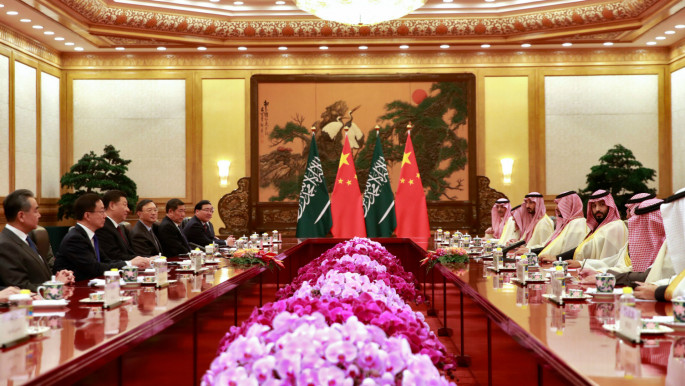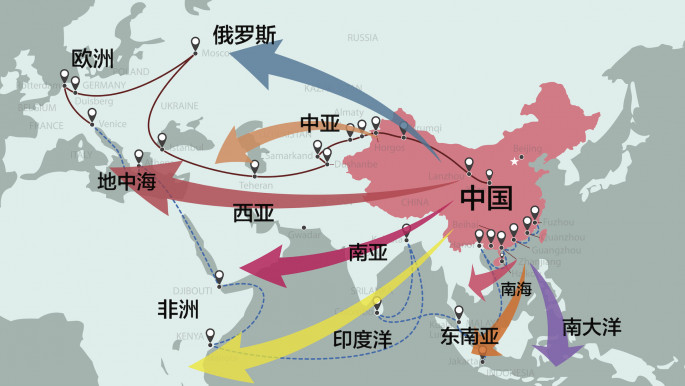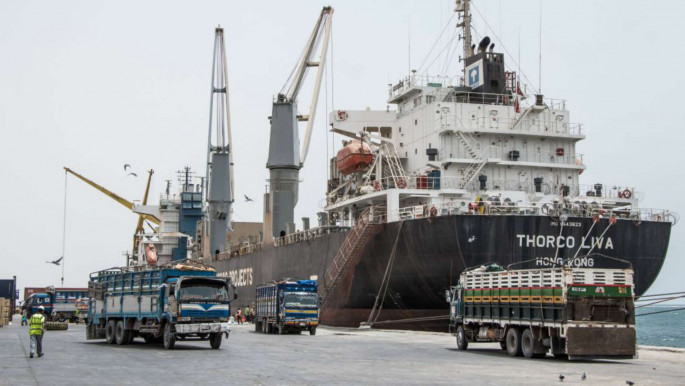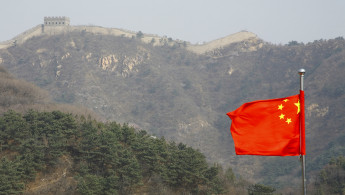How China is heavily contributing to Middle East drone and missile proliferation
The People's Republic of China has contributed significantly to the proliferation of both ballistic missiles and armed drones in the Middle East and shows no sign of reversing course in the foreseeable future.
While the United States and its European allies have long sold their Middle East clients billions worth of arms, even when those clients committed war crimes, they have routinely restricted the sale of both ballistic missiles and armed drones.
This is due to fears that such lethal weapons could fall into the wrong hands and because the US, most of Europe and Russia are all signatories of the Missile Technology Control Regime (MTCR), which seeks to prevent the proliferation of such weapons. China, on the other hand, is not a signatory of the MTCR.
Citing US intelligence sources, a recent CNN exclusive confirmed that Saudi Arabia has been "significantly escalating" its ballistic missile programme with China's help.
This had previously been suspected in January, when satellite images revealed that the Saudis now possess what appears to be a ballistic missile factory and testing stand apparently based on a Chinese design.
The Saudis stockpile of ballistic missiles originates from China. In the late 1980s, the kingdom procured long-range nuclear-capable DF-3A ballistic missiles, which were first introduced in 1971. They were displayed to the public for the first time ever in a military parade back in April 2014.
 |
Satellite images revealed that the Saudis now possess what appears to be a ballistic missile factory and testing stand apparently based on a Chinese design |  |
In 2007, the Saudis also acquired more accurate DF-21 ballistic missiles from China. The US approved the deal on the condition that the CIA was first allowed to inspect the missiles and verify they were not nuclear-capable.
 |
|
| Read also: 'China is a good friend to Saudi Arabia': MbS bags $10 billion Beijing oil deal |
Today, Beijing is providing Riyadh with unspecified assistance to expand the Saudi "missile infrastructure and technology" according to CNN. This revelation, coupled with the aforementioned disclosure of the missile facility earlier this year, indicates that China is giving the Saudis the know-how and infrastructure to build their own missiles.
Over time, that could enable the Saudis to engage in a ballistic missile arms race with their Iranian adversaries on the other side of the Gulf.
This wouldn't be surprising nor all that unprecedented since China previously has helped Turkey develop its own ballistic missile arsenal. This began in the late 1990s when Ankara made a deal that allowed it to produce licensed Chinese B-611 missiles.
Out of this Turkey manufactured the J-600T Yıldırım tactical ballistic missile with Chinese technology. These missiles were first shown to the Turkish public in 2007. There are at least two variants of that missile, the first with a range of 150km and the second with a range of 300km.
In 2017, the Bora-1 ballistic missile entered service. It was made by the Turkish arms manufacturer and contractor Roketsan and is reportedly built with domestically-made components, although the guidance system is American-made. According to Roketsan the Bora-1 can hit targets from up to 280km away and is accurate to within 50 metres. It carries a 470kg warhead.
 |
China is giving the Saudis the know-how and infrastructure to build their own missiles |  |
Turkey is also a signatory of the MTCR, which seeks to ban countries from importing or exporting missiles with warheads heavier than 500kg and ranges exceeding 300km. This means that the Bora-1, which Turkey also intends to export, and the J-600T are in compliance with these limitations.
Turkey's Bora-2 project, on the other hand, has raised eyebrows since Ankara says it seeks to expand the range of the Bora-1. It would make little sense for Turkey to invest in building a new missile with an extended range of a mere 20km and a warhead only 30kg heavier than the Bora-1's.
This suggests future Turkish missiles may exceed the limitations set by the MTCR.
 |
|
| Read also: Belt and Road Initiative: As America's power fades, China lures Arabs into its sphere |
Unconfirmed Turkish press reports claimed the Bora-1 has already been used against Kurdistan Workers' Party (PKK) targets in a cross border strike into Iraqi Kurdistan in late May.
If true this would be the first time Turkey used such a missile in combat as well as another worrying indication that Middle East states are more readily using such weapons in the region's conflicts.
Iran, for example, also preemptively targeted and destroyed a Kurdish opposition group's headquarters deep inside Iraqi Kurdistan using its own Fateh-110 ballistic missiles last September.
While the Bora-1 is likely a more improved version of the J-600T with much more locally-developed components its existence is doubtlessly thanks to Beijing's initial willingness to help Ankara get a ballistic missile programme off the ground in the first place.
China also secretly sold Qatar short-range SY-400 ballistic missiles, which were publicly revealed in the country's December 2017 National Day military parade.
In recent years, Beijing has supplied armed drones to several countries in the Middle East, contributing greatly to the proliferation of these weapons in the troubled region in clear contravention of the MTCR's noble objectives.
 |
The UAE has notably used Wing Loongs in the controversial Saudi-led air campaign against the Houthis in Yemen, which has contributed greatly to that country's destruction and misery since it began in early 2015 |  |
China's Wing Loong II drones are essentially complete replicas of the American Predator drone and fire the Chinese equivalent to the American Hellfire air-to-ground missile. China have sold them to states across the Middle East which has directly contributed to the proliferation of these unmanned weapons.
 |
|
| Read also: What is the UAE's game in the Horn of Africa? |
The United Arab Emirates (UAE) has notably used Wing Loongs in the controversial Saudi-led air campaign against the Houthis in Yemen, which has contributed greatly to that country's destruction and misery since it began in early 2015.
In April 2018, the UAE killed Saleh al-Samad, the president of the Houthis' Supreme Political Council, in a drone strike. Saleh's death marked the first time a senior member of the Houthi movement was successfully assassinated in such a way.
UAE Wing Loong drones have also carried out strikes in support of General Khalifa Haftar's ongoing siege of Libya's capital Tripoli. So far, that siege has killed at least 600 people and displaced 90,000 since it began in early April. Use of UAE drones is in violation of the UN arms embargo on Libya.
All these cases indicate that China's willingness to fill a large part of the arms market the West has avoided in the Middle East is doing little more than making the various conflicts in this region even more dangerous and destructive.
Paul Iddon is a freelance journalist based in Erbil, Iraqi Kurdistan, who writes about Middle East affairs.
Follow him on Twitter: @pauliddon



